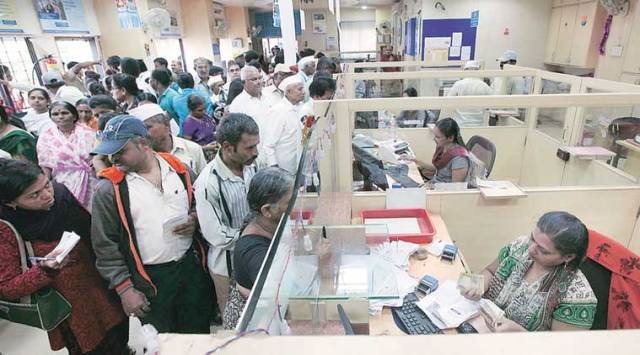Banks’ gross NPAs drop to 3.2% in Sept-end helped by retail loans
Write-offs, recoveries contributed to reduction in NPAs: RBI data
 The GNPA ratio of banks may further rise to 5 per cent and 5.3 per cent, respectively, in March 2026, under adverse scenario 1 and adverse scenario 2. (Representative image)
The GNPA ratio of banks may further rise to 5 per cent and 5.3 per cent, respectively, in March 2026, under adverse scenario 1 and adverse scenario 2. (Representative image)The gross non-performing asset (GNPA) ratio of scheduled commercial banks (SCBs) fell to 3.2 per cent at end-September from 3.9 per cent at end-March, a Reserve Bank of India (RBI) report said on Wednesday.
The GNPA ratio remained the highest for the agricultural sector and the lowest for retail loans as at end-September, the report on Trends and Progress of Banking in India 2022-23 (FY23), released by the RBI, showed.
“The GNPA ratio of SCBs fell to a decadal low of 3.9 per cent at end-March 2023 and further to 3.2 per cent at end-September 2023,” the report said.
The asset quality of the industrial sector improved further, with its GNPA ratio at 4.2 per cent at end-September 2023. Within the industry, the reduction in the GNPA ratio of large industries from 22.9 per cent at end-March 2018 to 4.6 per cent at end-June 2023 was noteworthy.
The slippage ratio — which measures new accretions to NPAs as a share of standard advances at the beginning of the year — moderated during 2022-23 and further in the first half (H1) of FY24. A mix of write-offs, upgradations and recoveries contributed to reduction in NPAs, the report said.
The consolidated balance sheet of SCBs in 2022-23 expanded by 12.2 per cent, driven by credit to retail and services sectors. Deposit growth also picked up, although it trailed credit growth.
The acceleration in gross bank credit at 15 per cent during 2022-23 was led by personal loans, which grew by 20.6 per cent and credit extended to the services sector, which registered a growth of 19.8 per cent. Within the personal loans segment, the growth in credit card receivables, which are a form of unsecured lending, rose sharply to 30.9 per cent. On unsecured lending, which are characterised by absence or inadequacy of collateral, the report said such loans present a higher credit risk for banks in the event of defaults. The share of unsecured advances in total credit of banks has been increasing since end-March 2015, reaching 25.5 per cent by end-March 2023. More than 50 per cent of loans by foreign banks are unsecured, while the share is lower at 27.3 per cent and 22.6 per cent for private banks and public sector banks, respectively.
The report said non-banking financial companies (NBFCs) gross advances grew by 16.1 per cent in 2022-23 from 9 per cent in 2021-22. NBFCs’ double digit credit growth was driven by unsecured loans which grew more than twice as fast as secured loans. The growth of unsecured loans (28.1 per cent) was more than twice that of secured loans (11.5 per cent). The report further said that concerted efforts by all stakeholders are required to protect the banking system and the payments system from the risks of fraud and data breaches emanating from cyber threats.
“Banks and NBFCs need to further strengthen their balance sheets through robust governance and risk management practices to meet the growing aspirations of the Indian economy,” it said.
Going forward, banks need to better recognise and address these technologies and cyber security risks to minimise potential vulnerabilities, it said.
It highlighted the high level of interconnectedness between banks and non-banks and said it merits close attention.
“Given the increasing interconnectedness between banks and NBFCs, the latter should focus on broad-basing their funding sources and reduce overdependence on bank funding. Such concentrated linkages may create contagion risk,” the report said.
NBFCs are large net borrowers of funds from the financial system, with the highest exposure to banks. Several NBFCs maintain borrowing relationships with multiple banks simultaneously. Banks are also key subscribers to their debentures and commercial papers.
Although banks are well-capitalised, they need to constantly evaluate their exposure to NBFCs as well as the exposure of individual NBFCs to multiple banks, it said.



- 01
- 02
- 03
- 04
- 05




























